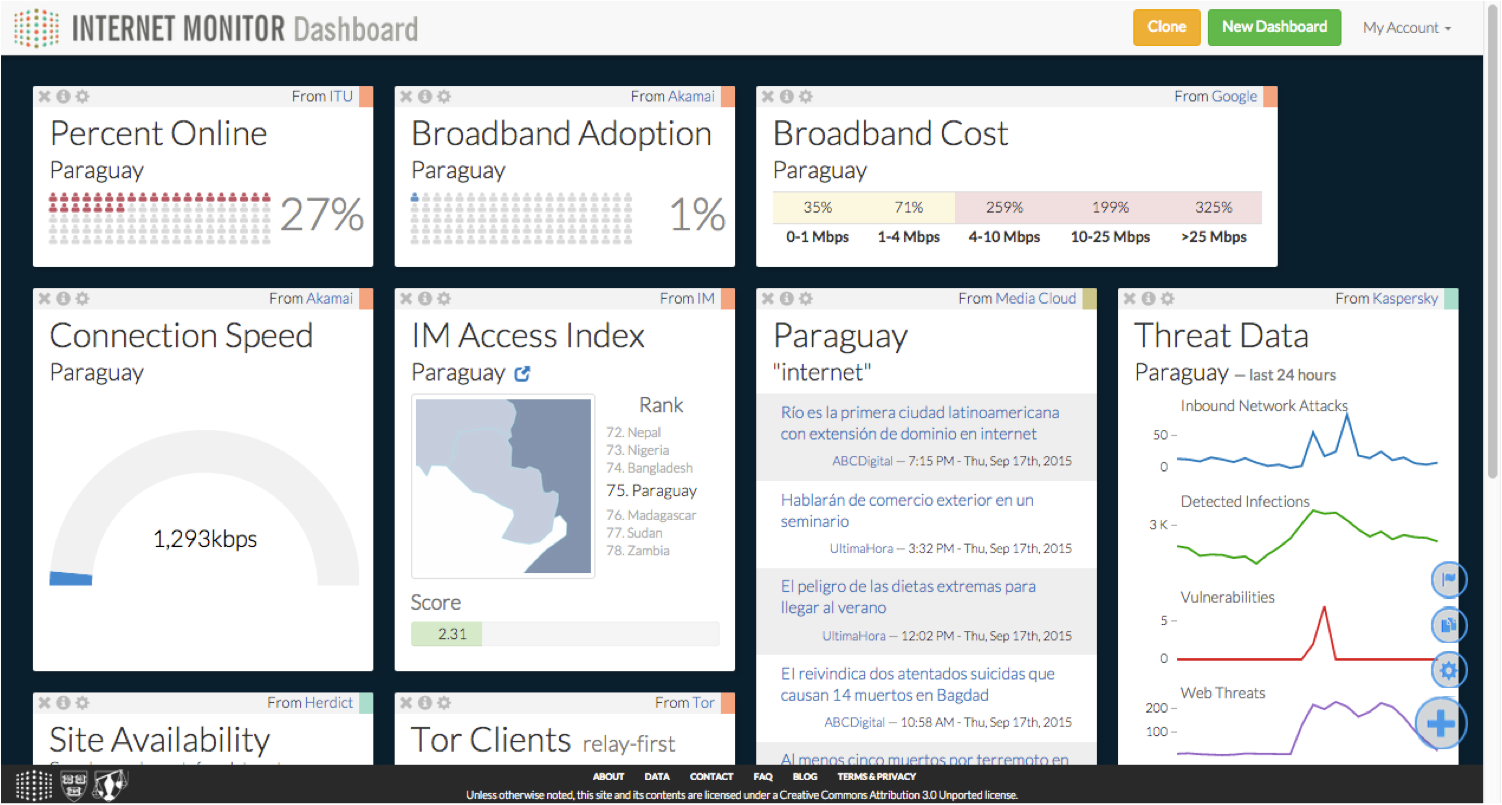
A tool that helps identify trends in internet activity through data visualization has been launched by the Berkman Center for Internet & Society at Harvard University.
Internet Monitor dashboard, a freely accessible tool, aims to improve information for policymakers, researchers, advocates, and user communities working to shape the future of the Internet by helping them understand trends in Internet health and activity through data analysis and visualization. The Dashboard debuted at World Economic Forum meeting in Geneva on September 28.
“Over three billion people around the globe use the Internet—for communication, for education, for livelihood,” said Urs Gasser, executive director of the Berkman Center. “As the Internet becomes a vital part of more and more people’s lives and as we shape its future, we need both data and analysis to help understand how it’s working. The Internet Monitor dashboard brings this data and analysis together in an easily shareable way.”
The dashboard lets users customize a collection of data visualization widgets—some offering real-time data—about Internet access and infrastructure, online content controls, and digital activity. Users can create multiple collections that enable easy comparisons across countries and data sources, and are quick to configure, edit, and share. In addition to creating their own collections, visitors to the dashboard will be able to view a selection of featured collections based on topics such as online media and network traffic around the world.
“I love what the Internet Monitor makes possible: a nuanced, informative view of what is really happening on the Internet all around the world,” said John Palfrey, a director of the Berkman Center. “I couldn’t be more excited by what we can learn by virtue of having this tool at the disposal of researchers, policymakers, journalists, and the public at large.”
The Internet Monitor dashboard launched on September 28 at the World Economic Forum’s Future of the Internet Initiative (FII) core community meeting in Geneva, Switzerland. As a Knowledge Partner of the FII, the Berkman Center for Internet & Society is leading and participating in a set of activities that aim to foster an open, interoperable, and affordable Internet, serving the global public interest.

“Internet Monitor is a key part of our effort to expand the evidence base for public and private decision making about the future of the Internet,” said Mark Spelman, Future of the Internet Initiative, World Economic Forum. “We are glad to be partnering with the Berkman Center on such an important venture.”
Internet Monitor’s public data platform and Access Index, which launched in July 2014, offer free public access to an initial set of primary and secondary data and related analysis. The project’s research series focuses on key events and new developments in Internet controls and online activity. The new dashboard offers an interactive view of of the state of the Internet across a variety of dimensions. By making data more available and approachable, the dashboard aims to inspire both greater use of the data that exists and greater efforts to collect and share that data that does not yet exist.
“Internet architecture relies on an extraordinary collective hallucination: there is no central authority or switching station,” said Jonathan Zittrain, faculty chair of the Berkman Center. “That has made measurement of even basic facts about the size and scope of the Internet, and the flow of bits within it, difficult. We need those measurements to inform any number of debates about the state and future of the Internet. This project aims to get them.” Zittrain added that a key feature of the dashboard is that its data comes from many sources, making important work from a variety of people and institutions around the world more accessible to people who can use it.
Internet Monitor continues to seek and integrate new sources of data in order to provide policymakers, digital activists, researchers, journalists, and user communities with an authoritative, independent, and multi-faceted set of quantitative data on the state of the global Internet. Current data partners include organizations such as Akamai, which is contributing data on country-level Internet connection speeds, network attacks, and web traffic; Kaspersky, which is contributing data on spam, cyberattacks, and infections; Media Cloud, which is contributing data on online media worldwide; and Herdict, which is contributing data on crowdsourced reports of website unavailability. The project will continue to add new data partners and sources on a rolling basis.